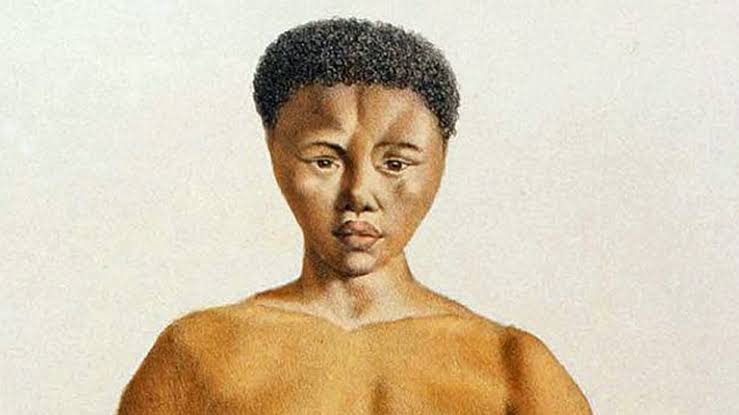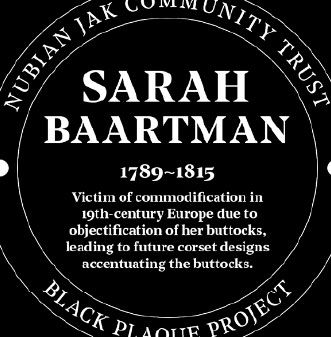
Sarah Baartman 1789 - 1815
Sarah Baartman, “The Hottentot Venus”, was a 19th-century British cultural phenomenon. “Hottentot” was the offensive term for the indigenous Khoikhoi people of South Africa, and “Venus” was for her steatopygic body type. Baartman was paraded as an erotic freak show attraction in London and Paris, becoming a subject of songs, jokes, cartoons, paintings and editorials. Her story is one of sex trafficking, a painful example of how black people were so often commodified and dehumanised.
Baartman was born in the Eastern Cape of South Africa (then the Dutch Cape Colony). Her mother died when she was a babyand her father was later killed while driving cattle. She spent her childhood and teenage years on Dutch European farms, and in the 1790s, she worked as a wet nurse in the household of a Boer called Hendrik Cesars, who decided to exhibit her at the city hospital in exchange for cash.
They caught the attention of Alexander Dunlop, a Scottish military surgeon, who had a side business in supplying circuses in Britain with animal specimens. The two hatched an idea to display Baartman as a specimen of African physicality. Accompanied by two African to London, they sailed to Britain, where they lived in Duke Street, Mayfair.
In London, the appearance of Baartman in skin-tight clothes, feathers and beads, smoking a pipe and playing a mouth harp, drew the crowds, but these performances, which looked to many onlookers to be against her will, provoked uproar among the public. The African Association led a campaign for her release. Zachary Macaulay, an abolitionist lawyer, took the matter to court. However, when Baartman was questioned via interpreters, she was reticent and refuted that she was there against her will. Unfortunately, the court case only increased her popularity; now, Baartman was shown across Britain and was now a figure of fun.
In 1814, a man called Henry Taylor took Baartman to France, where her life took a tragic turn. Taylor sold her to Jean Riaux - a ballet dancer often described as an animal trainer and a deportee from the Cape Colony, who practically enslaved her, exhibiting her for over a year at the Palais Royal in Paris, and it is thought she was a prostitute.
Naturalists and scientists including George Cuvier, founder of the discipline of comparative anatomy at the Muséum National d’Histoire Naturelle, flocked to examine her, mainly because of an obsession with her genitalia and buttocks.
As a result, she became the subject of several scientific paintings. The exhibiting of her person did not stop even when she passed away at the young age of 26 from an inflammatory disease. A plaster cast of her body and her genitalia were exhibited, remaining at the Museum until 1975.
When Nelson Mandela became Prime Minister of South Africa in 1993, he requested that her remains be returned to South Africa and she was buried in the Eastern Cape. Location: 187 Piccadilly, St James’ London

